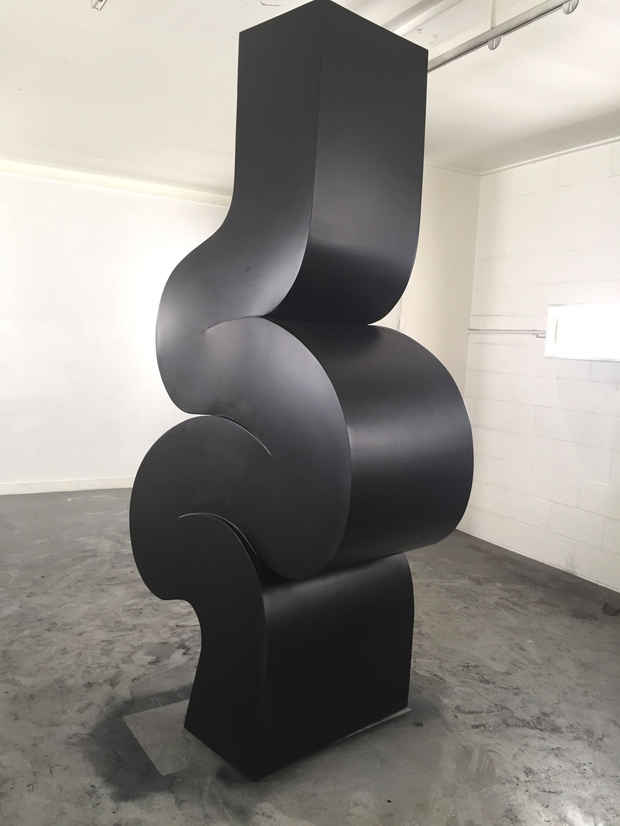Carl D’Alvia “Endless”
Nathalie Karg

This event has ended.
There is a photograph by Edward Steichen in the collection of The Met that captures a day in 1920 in his garden in Voulangis, France. A group of workmen, supervised by Constantin Brancusi are erecting a twenty-four foot high version of the artist’s Endless Column. The column is nearly horizontal, looking less like the modernist totem it became and more like what it was: an undulating form carved from a tree in the garden itself. The day was just two years after Brancusi made his first column, comprised of a pair of truncated pyramids fixed together at their bases. The repetition of this combination produces an infinitely expansive event that appears simultaneously still and rhythmically in motion. In Steichen’s garden that day, Brancusi, looking more prophet than craftsman, completed his own infinite loop, from nature to sculpture to nature again.
In all of his sculptures, Carl D’Alvia is Steichen, Brancusi, and the workmen: he is making a new nature out of extant material, reshaping an object or material into something unexpected, creating a simulacrum of that thing, and in doing so documenting its very existence. This is demonstrated across his two exhibitions at Nathalie Karg and Regina Rex; the former being a show of his most conceptually ambitious, and largest works to date, and the latter a much-needed, if informal, retrospective of the last decade of his work.
The titular sculpture of these dual shows is Endless, which is staged across the floor of the Karg gallery: 8 rhomboids with two halves on either end. These rhomboids resemble anamorphic boxes (they are quite impossible to photograph) made of individual resin planks that each have quite distinctive grains. The grains are a form of three-dimensional drawing — a knowing deception that continues as the boards are assembled into a “box”, right down to illusory slotted screws. The boxes lean at nearly impossible angles. One wants to sit under them for shielding, lie on top of them for some air, or just meditate on their movement. They form a contemporary Endless Column, but as though the workers of Steichen’s photograph never lifted it off the ground — it repeats across the ground in Minimalist fashion. These boxes, like so many of D’Alvia’s objects, are dense with allusion and meaning. They are physically empty inside, but packed with thought. Like Steichen’s photograph, “Endless” is neither the thing itself nor an image of the thing, but something in between. It is an imaginary object, more akin to one of Borges’ Imaginary Beings than to anything in our known world.
Carl D’Alvia is something of a romantic, and one with a perverse sense of humor and love of art history and the paradoxes it offers to those with their eyes open. His other new works at Karg include a collapsing monolith made from aluminum, as though a John McCracken suddenly stood up, entered a Kubrick film, became alarmed at the site of the uncertain terrain, and simply collapsed in on itself. That’s the funny angle. It is also a strikingly profound entry into that most fraught category of art: terror, for it seems to embody the World Trade Centers of our minds, and the weight of its final curve makes one fear for the ground underneath it. On a lighter note, but no less impossible is a mandala-like puzzle of 40 clumps of ceramic spaghetti, because what is better to worship (and in doing so, transform) than this most delicious of pastas. The spaghetti, like D’Alvia’s woodgrains, are drawings as much as objects — with the obsessive, stroke-after-stroke, from-the-shoulder gesture that one might expect to see in a drawing by Rubens. This translates, of course, to paper, on which D’Alvia excels at delineating contours in space, creating Surrealist images that place his objects into a world consisting only line and tone, and thus deep, everlasting space.
Dan Nadel
Media
Schedule
from January 08, 2017 to February 19, 2017
Opening Reception on 2017-01-08 from 18:00 to 20:00